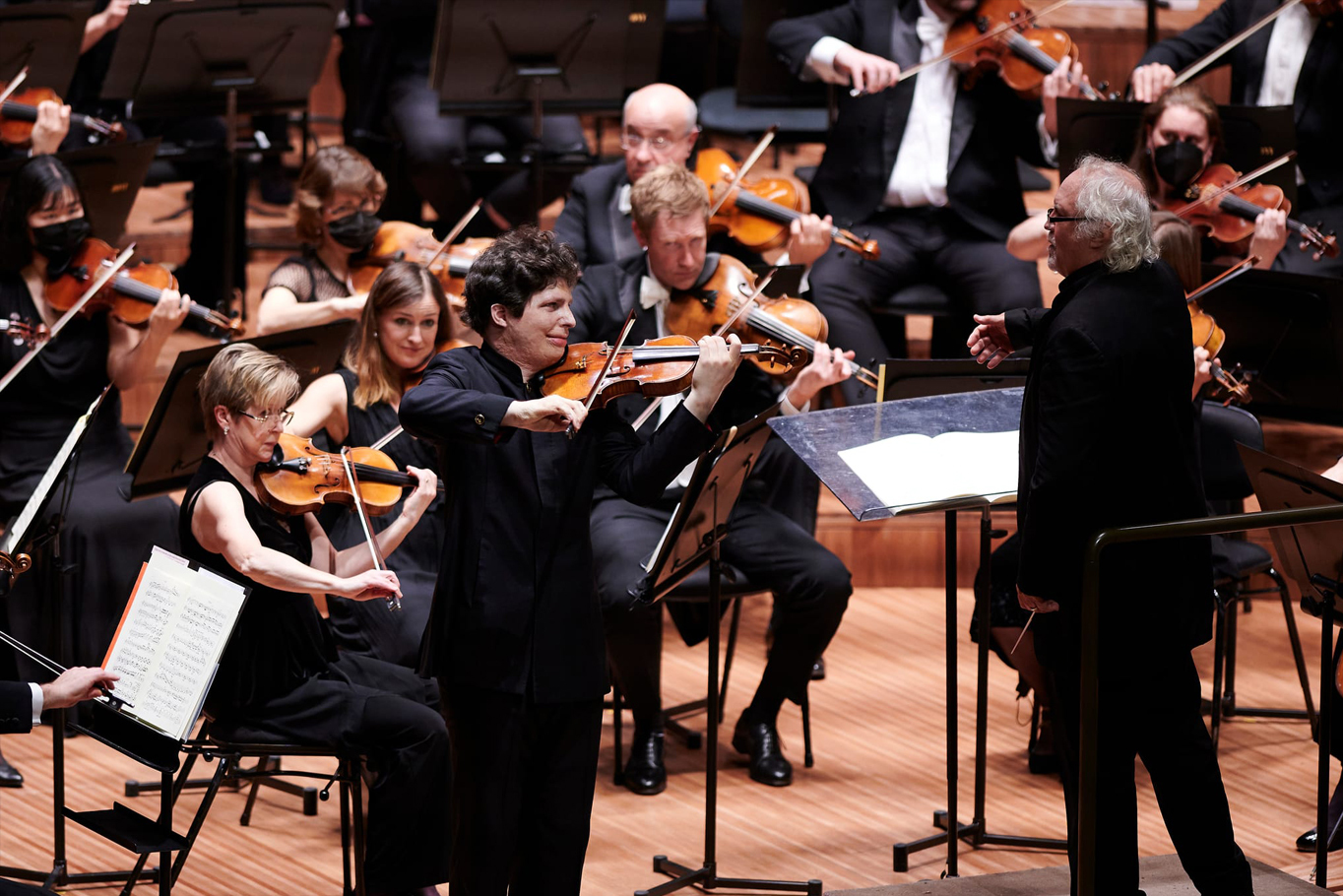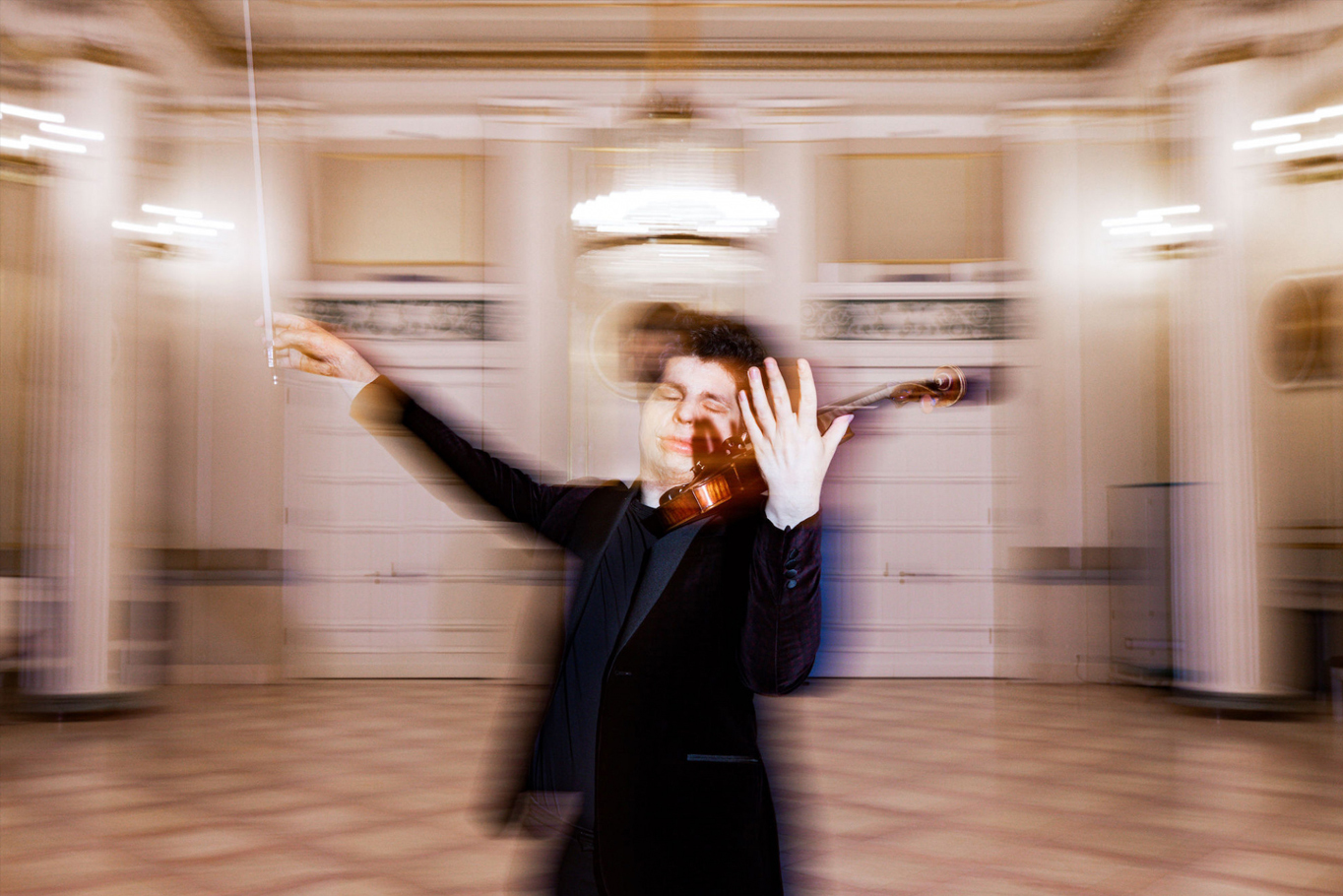
Augustin Hadelich Returns
16 July, 2024
Violinist Augustin Hadelich took Sydney by storm when he debuted with the Orchestra in 2022, performing Brahms’ Violin Concerto. This August he is back by popular demand to perform another of the great concertos, as well as a rare and thrilling chamber orchestra concert that will showcase his dazzling virtuosity in a different light.
By Hugh Robertson
Anyone who heard Augustin Hadelich’s debut with the Sydney Symphony Orchestra doesn’t need to be told that he is one of the most thrilling violinists in the world.
Those performances of the Brahms Violin Concerto in August 2022 had the critics running out of superlatives. ‘Beg, borrow or steal a ticket’ was the headline in the Sydney Morning Herald; ‘his tone on the violin is like no other.’ ‘The opening moments of the solo after the orchestral introduction were like a silk ribbon unfurling,’ wrote Limelight – ‘His playing is seemingly effortless’.
No sooner had Hadelich walked offstage than a return visit was being planned, and now he returns for not just one but two programs: the first, performing one of the other great violin concertos, this time that by Felix Mendelssohn, in concerts led by Chief Conductor Simone Young. The second a chamber orchestra program that traverses four centuries of music for the violin, from Bach to Shostakovich and beyond, a once-in-a-lifetime opportunity to hear this extraordinary talent in the close confines of City Recital Hall, Sydney, as well as Wollongong and Shoalhaven.
Both concerts promise to be highlights not just of the Sydney Symphony’s season, but of Sydney’s broader cultural calendar in 2024.
Ahead of these two keenly-anticipated concerts, Hadelich took the time to answer some questions via email.

Your performances with us in 2022 was your Sydney Symphony debut – what were your impressions of the Orchestra, and of Sydney?
My first visit to Sydney was really lovely. Brahms’ Violin Concerto is one of the most collaborative pieces in the repertoire, and I felt really good chemistry with the orchestra. The renovated acoustics of the Sydney Opera House were also fabulous.
What makes the Mendelssohn Concerto so special? Why do you think it has remained central to the repertoire for nearly 200 years?
The piece was quite groundbreaking at the time, and many later composers were deeply influenced by the Mendelssohn Concerto and its innovations with regard to violin concerto form.
Rather than beginning the work with an orchestral introduction (as would have been expected at the time) the soloist enters immediately, with the urgent, passionate first theme spinning out over murmuring, agitated arpeggios in the violins and a portentous, heartbeat rhythm in the bass. The mood is restless, and the tempo indication molto appassionato. In complete contrast, the second theme is calm and blissful – tranquillo, romantic, and loving. Mendelssohn’s placement of the cadenza at the end of the development was a new idea at the time, and by connecting all three movements he further shapes the work’s dramatic flow. To connect the second and third movement, he inserts a short operatic intermezzo of just fourteen bars (Allegretto non troppo). It is a short recitativo based on the opening motif of the first movement, bringing us into E major, where the fun can begin! This is Mendelssohn’s whimsical side, which is on display in many of his scherzo movements (in A Midsummer Night’s Dream, for example, or in the Octet), and which for me conjures up delightful images of woods teeming with fairies and other magical creatures.
When Felix Mendelssohn set out to compose his Violin Concerto for his friend and concertmaster of the Gewandhaus Orchestra, Ferdinand David, they agreed that it was going to be a brilliant, virtuosic piece – even jokingly using the words ‘stilo moltissimo concertantissimo’. Mendelssohn joked back that the soloist’s entire first entrance would consist of a high E. Thankfully he didn’t keep his word on that!
The work is extremely well written for the instrument and exhibits its capabilities to full effect, and it is therefore sometimes considered to be an easier work, or a ‘student piece’, often played very early on by children and young students. However, the musical challenges of this piece are significant, and I would agree with Heifetz that although it lies so well on the violin, playing the Mendelssohn really well is extremely difficult. The challenges are not unlike those found in Mozart’s works – while it’s not difficult to play the notes, the music is so transparent, and needs to be played with precision and lightness, and full of character.
You recorded the Mendelssohn concerto almost 10 years ago now – but I believe you learned it when you were very young – and it often appears on your seasons. What is it that keeps you coming back to the piece?
I started playing the Mendelssohn concerto when I was eight years old, and never really stopped. The piece is so exciting, exhilarating and beautiful, that it’s no surprise that it was immediately an audience favorite and has remained so. At one point, I did a kind of ‘reset’, discarding old engrained tradition and old habits and starting again with a blank urtext score and trying to play as if I had never heard it before. Ever since then, I enjoy the piece even more!
In a recent interview you said that, if you could spend the afternoon with just one of history's great composers, Mendelssohn would be at the top of your list. Why is that?
There are many composers who would be fascinating to meet. Who wouldn’t want to meet Bach, Beethoven, Brahms, Bartok etc.? But from reading Mendelssohn’s letters, it becomes clear that he was a nice, sophisticated, witty, and friendly person. The same can’t be said of Beethoven— so I think dinner with Mendelssohn would definitely be much more pleasant!
This will be your first time working with our Chief Conductor Simone Young. What are you most looking forward to about that experience?
I’ve heard so much about Simone Young, and can’t wait to make music together! There is no better way to make new friends than by playing music together.

What can you tell us about the chamber orchestra program? Where did the inspiration for this come from?
I love programs that tell a story, and am very excited about this unusual format.
When the idea came up of leading a chamber orchestra program, I immediately thought of the haunting Shostakovich Violin Sonata (in an arrangement for violin, strings and percussion); it isn’t a particularly well-known piece, but I keep returning to it over the years. The work creates a deep, lasting emotional impact.
Each half of the program starts with a movement from mystery sonatas by David Lang. These are searching, wrenching, personal pieces— the first of them gradually losing momentum and hope until it ends in silence (out of which the Shostakovich sonata emerges); and the other, at the start of the second half, a gradual awakening, after which I will play Bach’s Partita No.3 in E Major – one of the most joyful pieces I know. It will be like sunlight dispelling the oppressive darkness of the Shostakovich.
Finally, the program concludes with a concerto by Chevalier de Saint-Georges, which is the complete opposite of the Shostakovich. It is light, joyful, overtly virtuosic— making the struggle and agony of the Shostakovich seem like a distant memory. Chevalier de Saint-Georges gets performed a bit more now than a few years ago, but is still largely unknown. This concerto in particular stands out among his works (I believe) and I think the audience will leave with a smile on their face!
How is a performance like this different from a concerto with the full orchestra? What do you enjoy about this format?
The possibilities in a recital or chamber program are limitless— whereas in symphonic programs I only contribute to part of the evening.
I feel that playing chamber orchestra works without a conductor brings the musicians very close together— one must listen so much more directly. While there are moments that are more challenging without a conductor, there are also others where the communication happens more directly— like chamber music on a larger scale.

